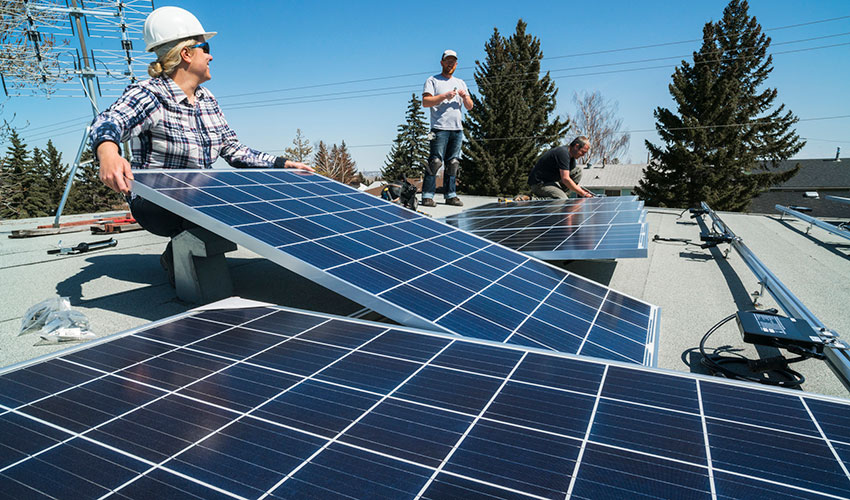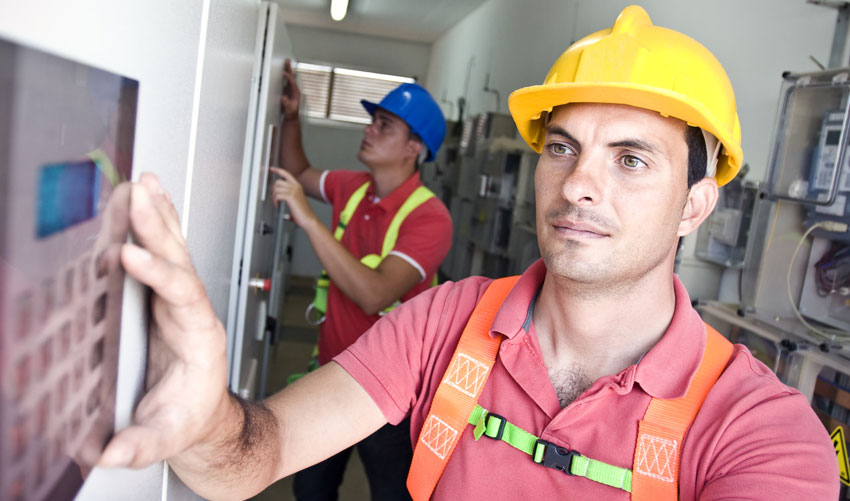Solar panel energy accounted for 39.8 percent of new U.S. generating capacity brought online in 2019, according to the U.S. Solar Market Insight report. This was a higher percentage than both natural gas at 32 percent and wind at 27 percent. We offer our breakdown of the best solar panels for home.
This and other advancements, such as the gradually increasing overall wattage available, which surpassed 76 gigawatts for solar, proves that America is making strides toward change. More affordable green energy is within our grasp and every year, more Americans understand the necessity of using solar panels, wind, and other natural resources. Instead of using traditional electricity, which creates massive amounts of greenhouse gasses, Americans are making the smart choice for their wallets and our planet.
Size of the Home
The size of the home you are trying to power plays a major role in how many solar panels it takes to power a house. In 2019, The Census Quarterly Starts and Completions by Purpose and Design and NAHB analysis reported that the median single-family square floor home is 2,355 square feet. Using this medium, the average house should need between 20 and 30 solar panels.
However, when it comes to solar energy, as well as traditional energy, one size certainly does not fit all.
Age of the Home
The age of the home also plays a role in how many solar panels it takes to power a house. In the last twenty years, homes have increased their power usage, but they have also steadily increased their efficiency. Any new construction is much more efficient than buying a previously-owned home. Plus, newer homes are built by those who have the knowledge that solar is a real possibility for the home. Therefore, it is ready to accept the equipment needed.
Plus, if you decide that you want to build a home that is particularly conducive to solar panels and green energy, you can opt to build a passive solar home. This home is built with optimal solar energy placement embedded into the blueprint of the home. Here are the different ways you can build a passive solar home (without installing the solar panels yet):
Choose a spot where the whole house has optimal sun.
Put the windows and the roof overhangs in solar-friendly areas.
Choose building materials with good Thermal Mass (which are also materials with good insulation).
Of course, even if your home is not new and you are not building a home, there are ways to find out how solar-friendly your home is. Taking part in a home energy audit is a great way to get more information about solar panels in general and see how efficient your home already is.
How Much Power Do You need?
 The average American home runs efficiently off 1,000 kWh of power per month. However, depending on your usage, how many people are in your house, and even what season it is, the number of kilowatts you need can change. For instance, even in a small house, if there is a lot of energy traffic flow on a daily basis, you may reach or surpass the average kilowatt usage with ease. Alternatively, if you are an older couple, or if you live by yourself, it is likely that even if your house is larger, you might not use the average number of kilowatts per month. Thus, you will not need the average number of solar panels.
The average American home runs efficiently off 1,000 kWh of power per month. However, depending on your usage, how many people are in your house, and even what season it is, the number of kilowatts you need can change. For instance, even in a small house, if there is a lot of energy traffic flow on a daily basis, you may reach or surpass the average kilowatt usage with ease. Alternatively, if you are an older couple, or if you live by yourself, it is likely that even if your house is larger, you might not use the average number of kilowatts per month. Thus, you will not need the average number of solar panels.
So, how much power you and your family are used to using plays a big role in the number of solar panels your home will require. If you are curious about a more personalized assessment, this Solar Panels Cost Calculator can help you determine a ballpark number for your individual situation.
The Cost of Solar
Solar jobs have increased by nearly 160% since 2010. This means that there are nearly 250,000 Americans who currently work in solar. Obviously, the solar industry is growing exponentially. However, that doesn’t mean that the cost is significant. In fact, the International Renewable Energy Agency, reports that the cost of solar panels is down 80% since 2008.
The expanse of the market has helped to ease the burden. Basically, since more people are getting solar, the individual cost is streamlined.
Plus, initiatives like Community Solar, where the power is used by more than one property, is also giving individuals a break on the cost of their solar panels. In a Community Solar situation, the number of solar panels that are needed will vary but your home will not be responsible for carrying that burden. In many of these instances, the solar panels are put on the top of a hill or somewhere that has access to a lot of sunshine.

To close, there are a few different factors that determine how many solar panels it takes to power a house. While most of these factors stem from your personal lifestyle and the size of your home, the community you live in also affects the ability to have any solar panels installed in a reasonable timeframe.




